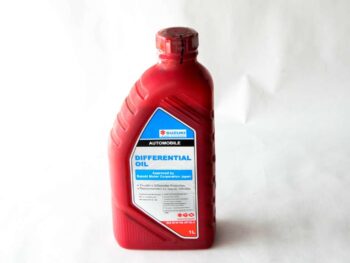 Car Accessories84 products
Car Accessories84 products Car Care Products8 products
Car Care Products8 products Car Cushions2 products
Car Cushions2 products Car Dashboard Cover3 products
Car Dashboard Cover3 products Car Door Visor6 products
Car Door Visor6 products Car Floor Mat3 products
Car Floor Mat3 products Car Glass Wash Accessories1 product
Car Glass Wash Accessories1 product Car Mudguards7 products
Car Mudguards7 products Car Seat Cover10 products
Car Seat Cover10 products- Car Sprays3 products
 Car Steering Cover4 products
Car Steering Cover4 products Car Top Covers6 products
Car Top Covers6 products Car Wax Polish4 products
Car Wax Polish4 products Mobility Kit1 product
Mobility Kit1 product Snow Chain1 product
Snow Chain1 product Wheel Covers12 products
Wheel Covers12 products
 Car Body Parts154 products
Car Body Parts154 products Car Bumpers9 products
Car Bumpers9 products Car Dashboards3 products
Car Dashboards3 products Car Doors26 products
Car Doors26 products Car Grills10 products
Car Grills10 products Car Handles14 products
Car Handles14 products Car Hoods3 products
Car Hoods3 products Car Horn Pads2 products
Car Horn Pads2 products Car Interior Parts11 products
Car Interior Parts11 products Car Mirrors19 products
Car Mirrors19 products Car Side Body4 products
Car Side Body4 products Car Spacers4 products
Car Spacers4 products Car Trunks2 products
Car Trunks2 products Car Wiper Blades1 product
Car Wiper Blades1 product Car Wipers3 products
Car Wipers3 products Fender8 products
Fender8 products- Ishara Pillars2 products
 Car Electrical Parts112 products
Car Electrical Parts112 products Car Engine Oil & Lubricants128 products
Car Engine Oil & Lubricants128 products Coolant10 products
Coolant10 products Differential Oil1 product
Differential Oil1 product Engine Oils109 products
Engine Oils109 products Gear Oil7 products
Gear Oil7 products
 Honda45 products
Honda45 products- Hyundai13 products
- KIA7 products
 Mechanical/engine119 products
Mechanical/engine119 products Car AC Filter2 products
Car AC Filter2 products Car Air Filter14 products
Car Air Filter14 products Car Brake Fluid4 products
Car Brake Fluid4 products Car Brake Pads14 products
Car Brake Pads14 products Car Brake Shoe4 products
Car Brake Shoe4 products Car Cables11 products
Car Cables11 products- Car Carburetors3 products
 Car Clutch Plate3 products
Car Clutch Plate3 products Car Disc1 product
Car Disc1 product- Car Engine Coils2 products
- Car Fuel Pumps3 products
 Car Radiators10 products
Car Radiators10 products Front Shocks2 products
Front Shocks2 products Oil Filter8 products
Oil Filter8 products Pressure Plate4 products
Pressure Plate4 products Spark Plug7 products
Spark Plug7 products Suspension9 products
Suspension9 products
 MG7 products
MG7 products- Mitsubishi2 products
- Nissan4 products
 Suzuki242 products
Suzuki242 products- Toyota95 products
Sort by
Differential Oil – All Vehicles
Suzuki, Alto, Bolan, Ciaz, Cultus, Car Engine Oil & Lubricants, Differential Oil, Mehran, Ravi, Swift, Wagon R
₨ 1,882
Differential Oil
Differential oil, also known as gear oil, is a specialized lubricant used in the differential of a vehicle. The differential is a component in the drivetrain that distributes power between the wheels while allowing them to rotate at different speeds, especially when turning. Differential oil serves multiple purposes, including reducing friction and heat generated by the gears, providing lubrication for smooth operation, and protecting against wear and corrosion.
How often should I change the differential oil in my vehicle?
The recommended interval for differential oil change can vary depending on the make and model of your vehicle, as well as the driving conditions. As a general guideline, it is advisable to change the differential oil every 30,000 to 50,000 miles or as specified in your vehicle’s owner’s manual. However, it is important to note that severe driving conditions, such as towing heavy loads or driving in extreme temperatures, may require more frequent oil changes.
Can I use any type of gear oil in my vehicle's differential?
No, it is crucial to use the correct type and viscosity of gear oil that is recommended for your specific vehicle’s differential. Different differentials may require different oil specifications, such as conventional or synthetic gear oils with specific viscosity ratings. Using the wrong gear oil can lead to poor performance, excessive wear, and potential damage to the differential. Always consult your vehicle’s owner’s manual or seek advice from a qualified mechanic to determine the appropriate gear oil for your vehicle.
How can I check the level and condition of the differential oil?
To check the differential oil level, locate the differential oil fill plug, which is usually located on the differential housing. Remove the plug and inspect the oil level. The oil should be at the appropriate level, reaching the bottom of the fill hole. Additionally, you can assess the condition of the oil by inspecting its color and consistency. Clean, amber-colored oil indicates good condition, while dark, contaminated oil may require replacement. If you notice any metal particles or a burnt smell, it is advisable to have the differential inspected by a professional mechanic.
Can I change the differential oil myself, or should I seek professional help?
Changing the differential oil can be a DIY task for those with experience and the necessary tools. However, it is essential to follow proper safety precautions and have a basic understanding of the procedure. If you are unsure or uncomfortable performing the task, it is recommended to seek professional assistance from a qualified mechanic. They have the expertise to ensure the correct oil is used, proper procedures are followed, and the differential is in optimal condition.






































































































